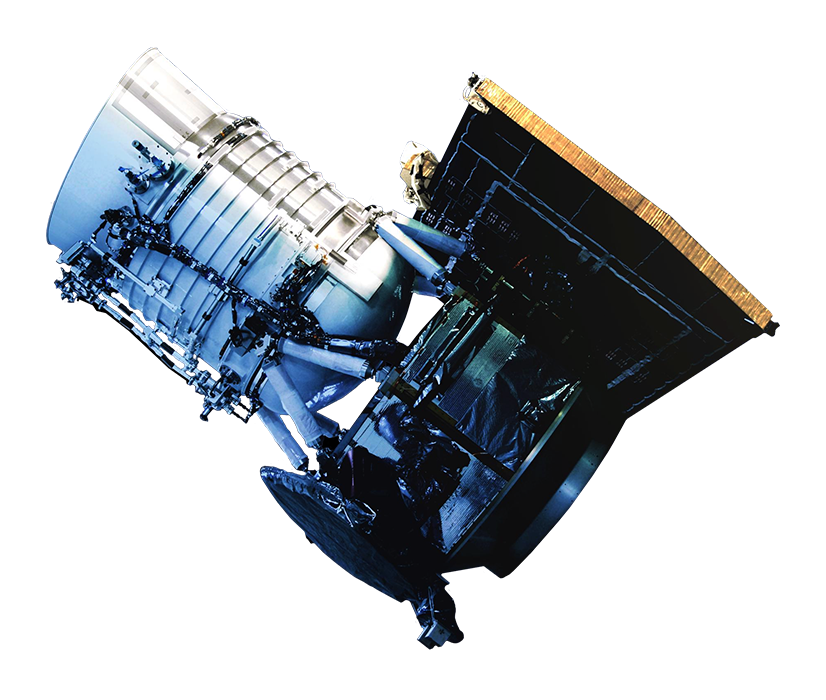Infrared Telescopes
Infrared telescopes are specialized instruments designed to observe celestial objects by capturing infrared (IR) radiation, which lies just beyond the visible light spectrum.
Components
Technologically, infrared telescopes rely on specialized detectors made from materials like mercury cadmium telluride (HgCdTe) or indium antimonide (InSb) that are sensitive to infrared radiation. These detectors are typically cooled to cryogenic temperatures to reduce thermal noise from the telescope itself. Space-based infrared telescopes often use advanced cooling systems, including liquid helium, to keep the detectors operational. Infrared instruments are equipped with filters and spectrometers that isolate specific wavelengths, enabling detailed analysis of celestial objects' composition and properties.
Categories
There are three primary types of infrared telescopes: ground-based, airborne, and space-based. Ground-based telescopes face challenges due to Earth's atmosphere, which absorbs much of the infrared radiation, especially from water vapor. To overcome this, such telescopes are located at high altitudes in dry climates, like Mauna Kea in Hawaii or the Atacama Desert in Chile. Airborne telescopes, like the Stratospheric Observatory for Infrared Astronomy (SOFIA), operate from aircraft, flying above most of the atmosphere to avoid interference. Space-based telescopes, such as the Spitzer Space Telescope, Herschel Space Observatory, and the James Webb Space Telescope (JWST), offer the most comprehensive infrared observations by eliminating atmospheric effects.
Applications
Infrared astronomy has provided crucial insights into star formation, revealing processes hidden within dense molecular clouds. Observations of distant galaxies in the infrared have shed light on galaxy formation and evolution over cosmic time. Infrared spectroscopy is also key to studying the atmospheres of exoplanets, identifying molecules like water vapor, methane, and carbon dioxide. Additionally, infrared data has deepened our understanding of cosmic dust's role in galaxy formation and its impact on light from distant objects.
Pros and Cons
Infrared telescopes are advantageous for penetrating interstellar dust that blocks visible light, enabling the study of star formation within dense gas clouds. They are also effective in observing cooler objects that emit strongly in the infrared, such as newly formed stars and planets. The universe's expansion causes light from distant objects to shift into the infrared spectrum, making these telescopes crucial for studying the early universe. However, challenges arise from the telescope's own thermal emissions, requiring advanced cooling systems, and from atmospheric absorption, even at high altitudes. Space-based infrared telescopes are limited by the finite supply of cryogens needed for cooling, as exemplified by the Spitzer Space Telescope’s mission ending when its coolant ran out.
Telescopes
Several infrared telescopes are instrumental in advancing our understanding of the cosmos. The James Webb Space Telescope (JWST), launched in 2021, is a flagship mission for infrared astronomy, equipped with advanced instruments to study the universe's first galaxies, stellar evolution, and exoplanet atmospheres. The Stratospheric Observatory for Infrared Astronomy (SOFIA) operates from a modified Boeing 747, allowing observations from above most of the Earth's atmosphere, though it is limited to shorter-term missions. Ground-based facilities like the Very Large Telescope (VLT) in Chile and the Gran Telescopio Canarias (GTC) in Spain are equipped with infrared capabilities, positioned at high altitudes to minimize atmospheric interference.

